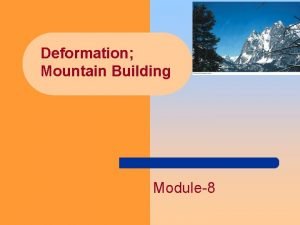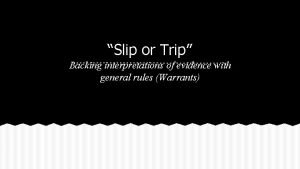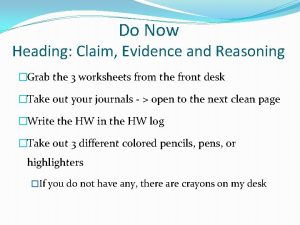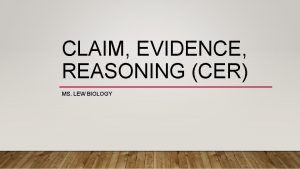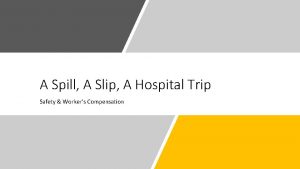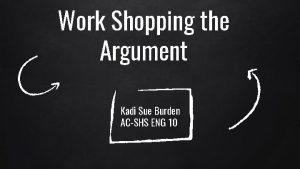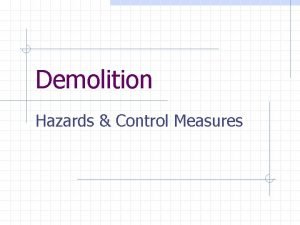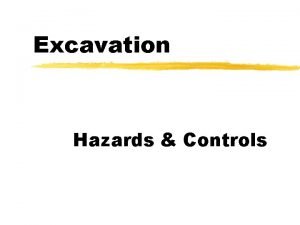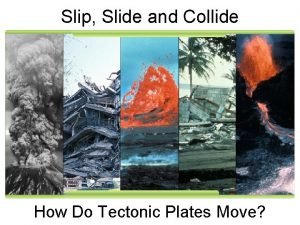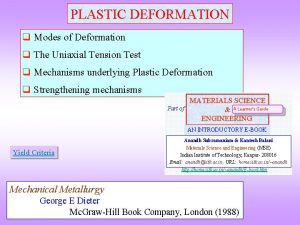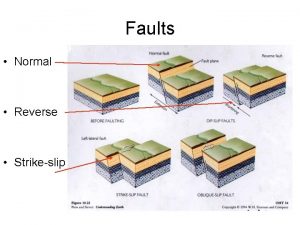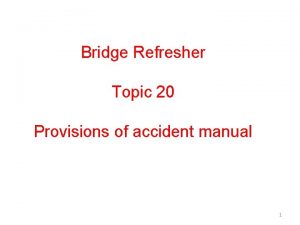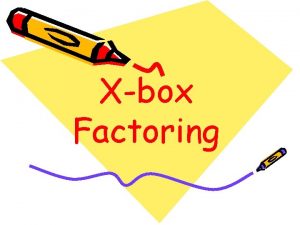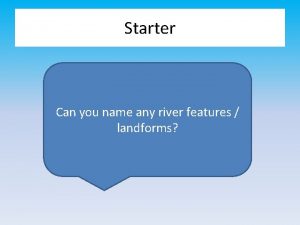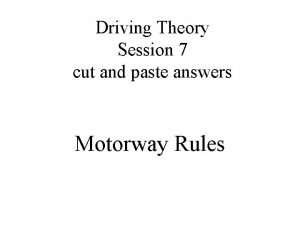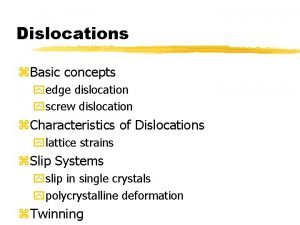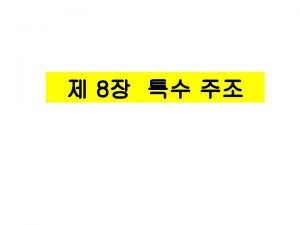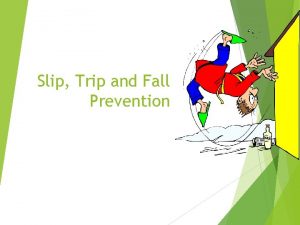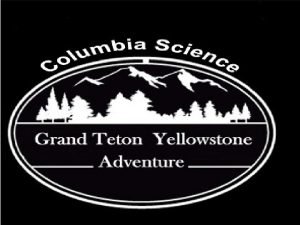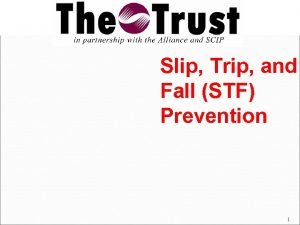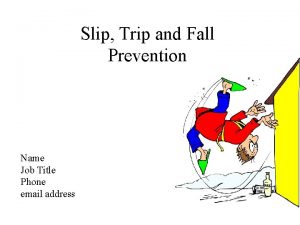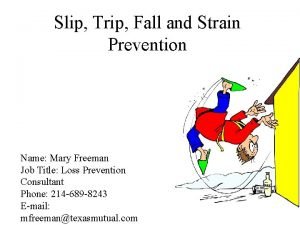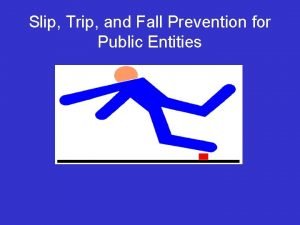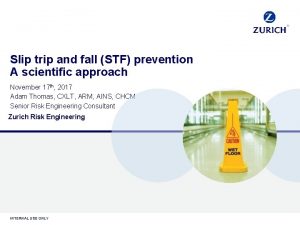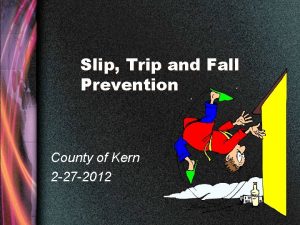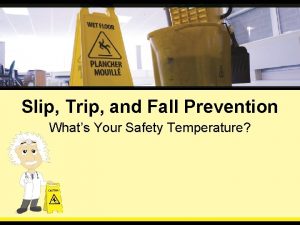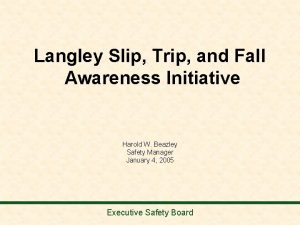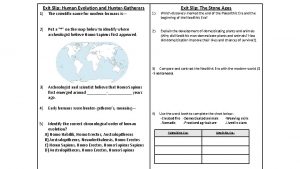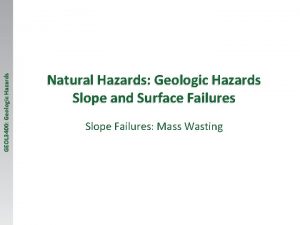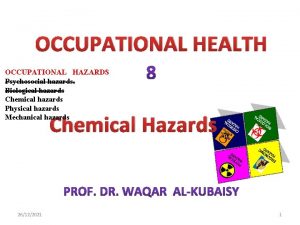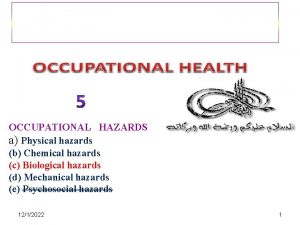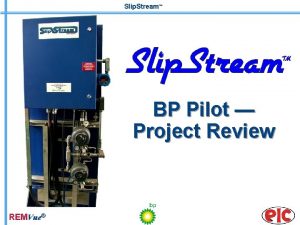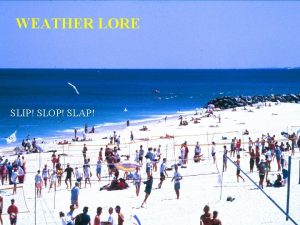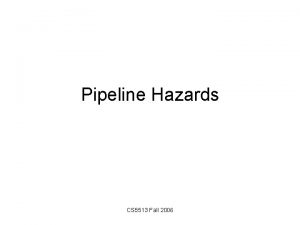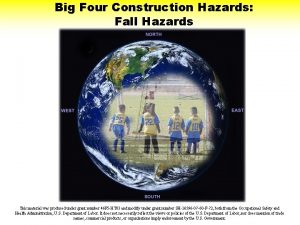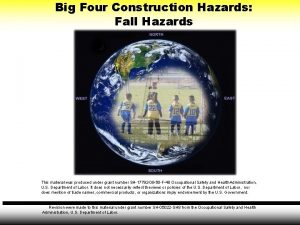Module 3 Evaluating Slip Trip and Fall Hazards


























- Slides: 26

Module 3 Evaluating Slip, Trip and Fall Hazards © 2006 3 -1

Objectives After completing this module, you will be able to: n Identify the three types of evaluation you can perform in your organization. n Identify the factors that influence the slipperiness of floors. n Identify the different floor types and their level of slip resistance. © 2006 3 -2

Objectives—continued n Understand how the coefficient of friction can be used to determine the slipperiness of a floor. n Identify the lighting standards for both general and emergency illumination. n Use the critical inventory method for evaluating slip, trip and fall hazards. © 2006 3 -3

Slip, Trip and Fall Prevention Recognize Evaluate © 2006 3 -4

Evaluate Parts of an Organization This is an evaluation of a specific item or area in your organization. n For example, you could assess the slipperiness of a floor, the safety of a ladder or the lighting in stairwell. n Use established standards. © 2006 3 -5

Evaluate an Existing Hazard This evaluation assesses the likelihood and extent of the harm a hazard might cause. n For example, test a known hazard on floor, in a stairwell, etc. n Use the critical inventory method. © 2006 3 -6

Evaluate the Organization This is an evaluation of your entire organization to determine where hazards exist. n For example, you could use Job Safety Analysis or Safety Inspection. n Use a checklist. © 2006 3 -7

Causes of Slips, Trips and Falls © 2006 3 -8

Factors of Floor Slipperiness n n n n n © 2006 Floor material Floor finish Floor texture and pattern Floor slope Floor contaminants Floor condition Environmental conditions Footwear of person Footstep of person 3 -9

What Makes a Floor Safe? © 2006 3 -10

The James Machine © 2006 Photo used with permission from the National Floor Safety Institute 3 -11

Horizontal Drag Meter © 2006 Photo used with permission from the National Floor Safety Institute 3 -12

BOT-3000 © 2006 Photo used with permission from the National Floor Safety Institute 3 -13

Portable Inclinable Articulated Strut © 2006 Photo used with permission from the National Floor Safety Institute 3 -14

English XL © 2006 Photo used with permission from the National Floor Safety Institute 3 -15

© 2006 3 -16

Poor General Lighting A slip, trip or fall may occur if a walking surface is poorly lit and it causes a person not to see an obstacle. © 2006 3 -17

Poor Emergency Lighting A slip, trip or fall may occur if an organization’s electricity fails in an emergency and employees can’t see their way out. © 2006 3 -18

Foot Candle A foot candle represents the amount of light or brightness that a birthday cake candle generates from a distance of one foot. © 2006 3 -19

Factor 1: Severity A measure of how dire or severe the consequences would be if the hazard caused an incident © 2006 3 -20

Factor 2: Exposure The number of employees who are exposed to the hazard, and the number of times they are exposed © 2006 3 -21

Factor 3: Probability The likelihood that the hazard will result in an incident © 2006 3 -22

Severity? Exposure? Probability? © 2006 Photo used with permission of Marsh USA, Inc. 3 -23

Case Study © 2006 Photo used with permission of Marsh USA, Inc. 3 -24

General Rule Slips and trips happen frequently, but tend not to be severe. Falls happen infrequently, but tend to be severe. © 2006 3 -25

Action Plan Action © 2006 Potential Barriers Overcoming the Barriers 3 -26
 Slip trip and fall hazards
Slip trip and fall hazards Dip slip vs strike slip
Dip slip vs strike slip Dip slip fault vs strike slip
Dip slip fault vs strike slip Dip slip fault vs strike slip
Dip slip fault vs strike slip Slip or trip assignment answer
Slip or trip assignment answer Queenie volupides
Queenie volupides Slip or trip claim evidence reasoning
Slip or trip claim evidence reasoning A spill a slip a hospital trip
A spill a slip a hospital trip Slip or trip accident or crime answer
Slip or trip accident or crime answer Slip or trip queenie answer
Slip or trip queenie answer Trip trap trip trap over my bridge
Trip trap trip trap over my bridge C device module module 1
C device module module 1 Cdm demolition
Cdm demolition Excavation hazards and controls
Excavation hazards and controls Physical hazards
Physical hazards Understanding hazards and risks
Understanding hazards and risks Transform
Transform Difference between slip and twinning
Difference between slip and twinning Lower mantle
Lower mantle Torque and slip relation
Torque and slip relation Slip casting advantages and disadvantages
Slip casting advantages and disadvantages Catch siding and slip siding
Catch siding and slip siding X box method factoring
X box method factoring Slip off slope meander
Slip off slope meander You are on a three lane motorway towing a trailer
You are on a three lane motorway towing a trailer Differentiate between slip and twinning
Differentiate between slip and twinning Advantages of permanent mould casting
Advantages of permanent mould casting

